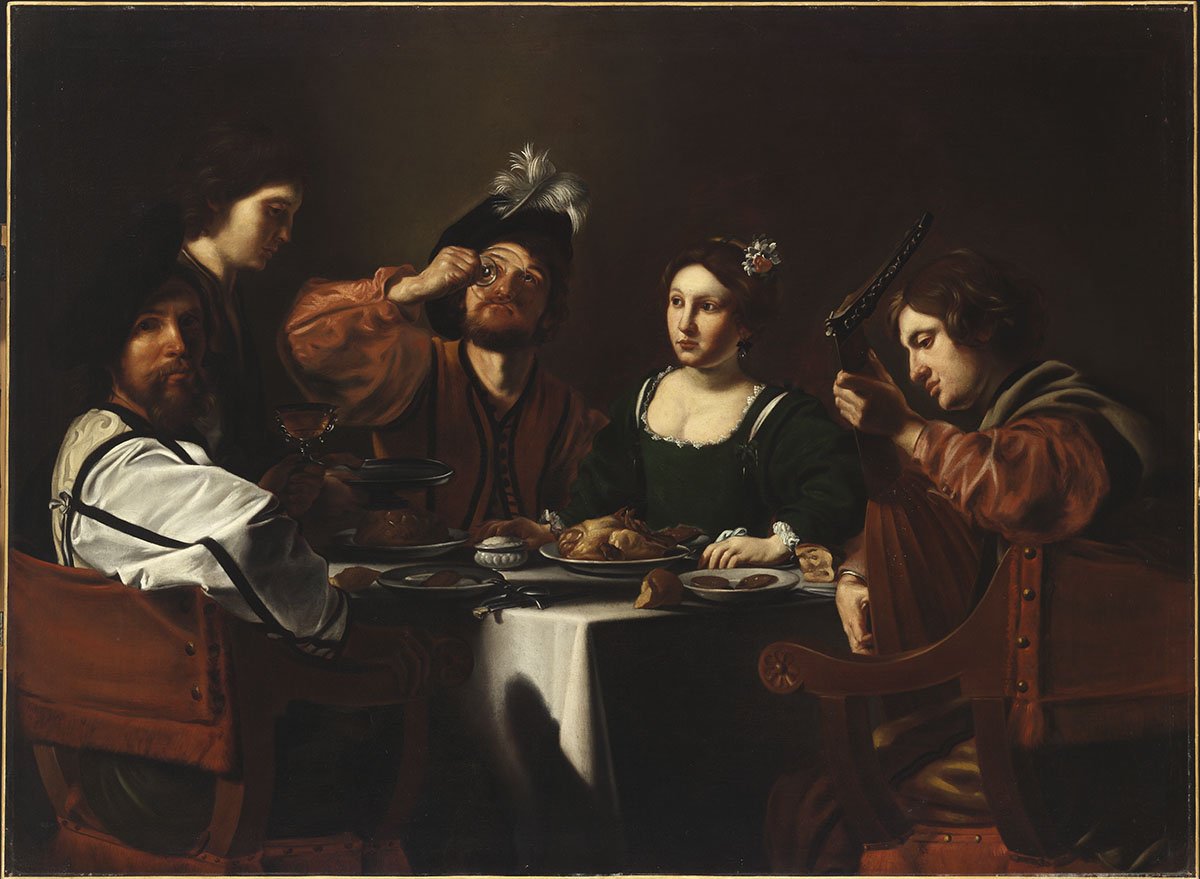
A Party
Old Master Paintings
| Artist | |
|---|---|
| Culture | Italian |
| Date | 1514 |
| Object type | painting |
| Medium, technique | oil on wood |
| Dimensions | 231.3 × 227.5 cm |
| Inventory number | 1405 |
| Collection | Old Master Paintings |
| On view | This artwork is not on display |
This little known triptych-altarpiece was purchased for the museum by Károly Pulszky, director of the National Picture Gallery of Budapest, from the art dealer Luigi Resimini in 1893 in Venice, for the sum of 3500 lire.
As its inscription states, the work was commissioned in 1514 by Giovanni Francesco di Jacopo degli Assalti, citizen of Fermo. The De Assalti family came from Offida near Ascoli Piceno, and was documented in Fermo since the fourteenth century. The Franciscan lateral saints (Saint Francis of Assisi, Saint Anthony of Padua) suggest the altarpiece was destined for a church with Franciscan affiliation (possibly the church of San Francesco in Fermo). The Assumption of the Virgin was a popular subject in the center of altarpieces during the decades following the year 1500, and it may also be a reference to the city of Fermo. The artist is unknown but appears to be a local master from the Marche area.
By 1815, the altarpiece was in the small church of Santa Maria in Saltareccio near Lapedone, which had previously belonged to the Reformed Minor Conventual Friars (“Ha un ampio Coro, ed un solo altare, in cui rimane un Quadro Semigotico, e sotto cui vi è questa iscrizione: hoc opus fieri fecit Joannes Jacobi de Assaltis Civis Firmanus 1513.”, Antonio Brandimarte, Plinio seniore illustrato nella descrizione del Piceno… 1815, pp. 259-262). The property on which the convent stood later seems to have come into the hands of Domenico Ranaldi (Luigi Rossi, in https://www.iluoghidelsilenzio.it/castello-eremo-di-saltareccio-lapedona-fm/, last accessed 30 October 2023), who may have alienated the altarpiece. In 1893, Pulszky reported an inscription on it, no longer present and dubious, according to which the altarpiece was “donated by the citizens of Chieti to decorate a chapel of the Church in that city” (Budapest, Museum of Fine Arts, Archives, 9/1893). Earlier authors cite the date as 1512 or 1513 because the last two digits are difficult to see.
Dóra Sallay ©2024
This record is subject to revision due to ongoing research.